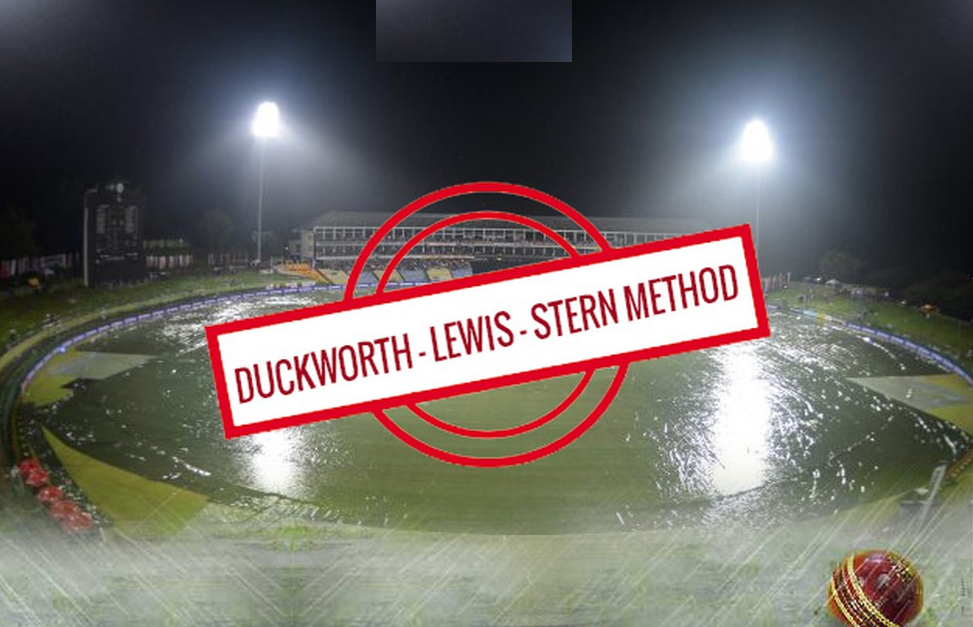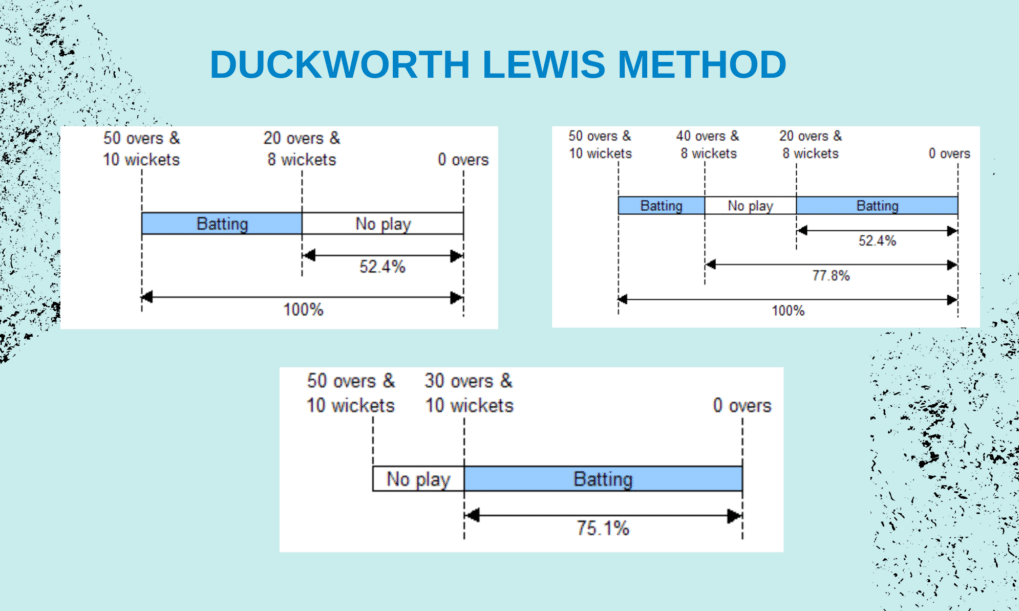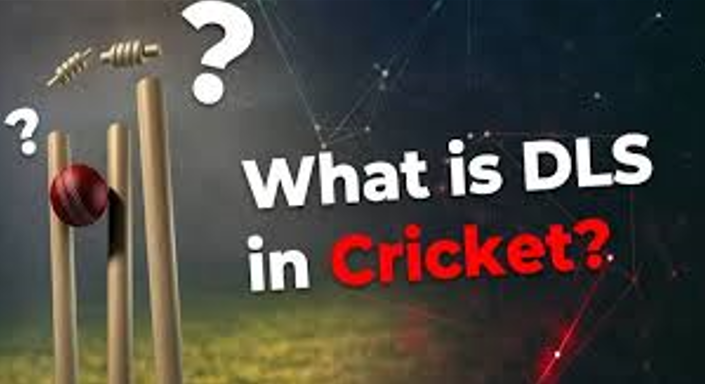DLS Method, also known as Duckworth-Lewis-Stern Method, is an important component of the current cricket that is employed to revise target scores in case of rainfall or any other delay in a match. It is a system created by statisticians Duckworth, Lewis and Stern to produce fair targets depending on the number of overs and wickets left.
Knowing what the DLS Method is allows fans and players to understand how cricket manages to be fair even with interruptions which are unpredictable. Relied upon by the cricket officials of every country, the DLS Method keeps the game competitive and balanced, and is therefore a prerequisite in the limited-overs cricket of the modern day. Here we will know what is DLS Method and how it works.
Understanding the Basics: What Is DLS Method?
Duckworth-Lewis-Stern Method (abbreviation: DLS Method), is a mathematical formula to calculate fair target scores in cricket when the match is interrupted by weather or other delays. This method was invented by statisticians Frank Duckworth and Tony Lewis in the 1990s but was revised by Steven Stern in 2014, to give the two teams a fair opportunity of winning despite the shortening of overs.

DLS Method takes into account the number of overs left as well as the number of wickets available to the team with the lower score to alter the target score of the team batting second. This is one of the methods that can ensure that the game is balanced and it is accepted by a majority of cricket authorities across the world.
The History and Development of the DLS Method
The Duckworth-Lewis-Stern Method or The DLS Method has been formulated after a controversial event in the 1992 Cricket World Cup semi-final between England and South Africa. There was a slight rain delay after which South Africa had only one run deducted in their target which was almost impossible to be won. This showed the weaknesses of the available techniques such as the Average Run Rate and Most Productive Overs, which did not consider the number of wickets lost.
In 1997 statisticians Frank Duckworth and Tony Lewis devised the DLS Method, which takes into account overs and wickets to set fair revised targets. The first international match that it was used was on January 1, 1997 between Zimbabwe and England. The method was officially adopted by the International Cricket Council (ICC) in 1999.
In 2014 Australian statistician Steven Stern revised the method to improve its accuracy and relevance in contemporary limited-overs cricket. This new version has come to be referred to as the Duckworth-Lewis-Stern Method.
The DLS Method has become part of cricket today, providing fair results with rain-affected matches.
How the DLS Method Works in Cricket Matches
Duckworth-Lewis-Stern (DLS) formula is a mathematical formula applied in cricket to determine fair target scores when matches are hampered by weather or other delays. It was devised to overcome the weaknesses of the earlier methods like the Most Productive Overs (MPO) method that did not take into account the number of wickets that a team lost in an innings.
In the DLS approach, both teams begin with 100 percent of its resources at the 50 overs, 10 wickets. These resources are exhausted as the innings goes on depending on the number of overs bowled and wickets lost. The process will estimate the percentage of resources that each team has left when an interruption is made. The original target is then adjusted to the proportion of resources available to the teams to come up with the revised target of the team batting second.

The timing of the interruption is also factored in the DLS method. The loss of overs in the second half is usually more costly than the same number in the first half because the rest of the overs are usually prolific. Also, the procedure takes into account the amount of wickets that a team has in hand when the interruption takes place as teams with more wickets to spare have a higher chance of scoring runs.
Including such factors, the DLS technique is created to establish a fair and reasonable method of calculating the target scores in rain-affected cricket games.
Key Components of the DLS Calculation
DuckworthLewisStern (DLS) is a statistical formula applied in cricket to make adjustments to the target scores when weather or other delays break a game. It is also fair because it takes into consideration the resources of both teams.
1. Resources
The two factors which are used to determine the resources in the DLS method are the number of overs remaining and the number of wickets in hand. Every combination of overs and wickets equals a certain percentage of the whole team’s resources. This percentage shows the ability of the team to run. The percentages of the resources are based on a vast amount of statistical research into the historic match data and are refreshed once a year, in order to accommodate the recent scoring trends.
2. Par Score
The par score is the runs that a team is expected to have scored at any moment during their innings bearing in mind the resources that they had at that moment. It can be used as a guide to know the target score of the second batting team. Par score uses the following formula:
Par Score = Score of Team 1 ( Team 2 Resources/ Team 1 Resources)
This computation makes sure that the new goal is proportionate to the amount of resources possessed by the two teams.
3. Adjusted Target
Adjusted target is the readjusted runs that have to be scored by the team batting second to win the match. In case the resources, which are available to the second team, are fewer than the resources available to the first team, the target is proportionally smaller. In case the second team possesses additional resources, they can raise the target, but not necessarily proportionally, to reflect the ability to score higher.
The DLS method is a fair and equitable technique of measuring target scores in rain-intervened cricket games because it integrates these elements.
Read Also: Casino Game Online Play That Feels Less Risky and More Rewarding
Criticisms and Alternatives to the DLS Method
Although the Duckworth-Lewis-Stern (DLS) procedure is popular, it is criticized by players, analysts and fans alike:
- Overweighting wickets over overs: The approach places a higher priority on wickets as opposed to balls left, so that a team can win by batting slowly and saving wickets, even if they have a losing run rate. This was identified and to some extent corrected in 2014 update
- High variance in T20s: Powerplay overs and late-inning rallies radically turn the T20 matches and as a result, DLS is not always able to properly display such processes.
- Complexity and transparency: Many find DLS calculations difficult to understand during live play.
- Predictive inaccuracy early innings: Statistics indicate that its par-score forecasts are barely accurate at the 50-60 percent mark around the 20-24-over line.
Alternatives and emerging solutions:
- VJD Method (by V. Jayadevan): Applied in certain Indian domestic games, it involves two curves, normal and target to indicate the scoring rate before and after breaks. Advocates say that it more closely reflects the real scoring patterns.
- New models & data‑driven methods: Some of the ideas are AI or Bayesian-powered models that consider the strength of a team and the pitch conditions, as well as real-time information.
Although DLS is the globally accepted standard, its opponents believe that more basic, more situational, and transparent models (such as VJD or AI-based systems) would provide more equitable results in the future.
Final Word
In simple terms, understanding what is DLS Method helps fans make sense of rain-affected matches. It is a scientifically supported system to maintain the game fair in case of loss of overs. It is not flawless, but it is the most solid approach that is applied globally. With the change in cricket, this method can also change in future but as it still is, the DLS Method is there to make sure that the results are balanced in the uncertain circumstances.

